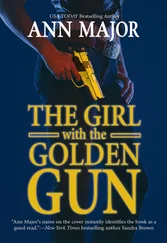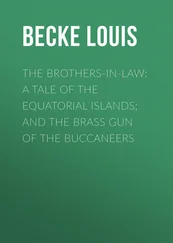Time and again I encountered a none-of-my-business attitude that permeates the firearms distribution chain from production to end sale, and that allows gunmakers and marketers to promote the killing power of their weapons while disavowing any responsibility for their use in crime.
Mostly, I discovered that the story of Nicholas Elliot’s gun was the story also of the forces that infuse the gun culture. It describes a de facto conspiracy of gun dealers, manufacturers, marketers, gun writers, and federal regulators that makes guns—ever more powerful guns, and laser sights, silencer-ready barrels, folding stocks, exploding bullets, and flame-thrower shotgun rounds—all too easy to come by and virtually assures their eventual use in the bedrooms, alleys, and schoolyards of America.
Reach out, the culture cries, and kill someone.
THE NAME VIRGINIA BEACH MAY CONJURE weathered cottages set among rippled dunes, but the city has far more in common with places like Ocean City, Maryland, and Atlantic City, New Jersey. Rental houses, motels, and seasonal apartments jam the Atlantic coastline. Tract developments stretch westward, spaced by mini-malls and shopping plazas of the kind anchored by discount hardware stores. The sprawl of concrete and plywood has erased the city’s borders, leaving a tightly entwined ganglion of six cities, the others being Portsmouth, Chesapeake, Norfolk, Newport News, and Hampton. Together they occupy a swath of metropolitan terrain larger in geographic expanse than Richmond, Washington, and Baltimore combined and share many of the same big-city problems, including widespread drug abuse, gang warfare, troubled schools, and the ever-increasing incidence of gunshot injury and death. Virginia Beach alone is home to 428 federally licensed gun dealers, 30 percent more than Baltimore even though Baltimore’s population is 60 percent larger.
Mapmakers, loath to tease apart the six cities, identify the area collectively as Hampton Roads, the name of the shipping channel that links the James River with Chesapeake Bay and the ocean beyond. The Roads, as local disc jockeys call the region, no doubt ranked high on the former Soviet Union’s list of American targets most worthy of nuclear obliteration. The region in and around Hampton Roads comprises a good chunk of America’s military-industrial complex, including Langley Air Force Base, Fort Eustis, the U.S. Naval Station at Norfolk, the Newport News shipyard, and the U.S. Naval Weapons Station on the York River. Virginia Beach, which occupies the eastern rim of Hampton Roads, is itself home to the Army’s Fort Story, the Camp Pendleton Naval Amphibious Base, and the Oceana Naval Air Station. Life here is textured by the roar of fighter planes and the thumping applause of giant helicopters. Where there is water, there are fighting ships, pale gray in the noon sun, spiky black in backlit silhouette.
The second most influential force here is the Baptist Church. Branches seem to sprout every few blocks or so in simple frame houses and soaring concrete towers. As in many cities now around the country and particularly in the South, the churches in Hampton Roads provide more than spiritual solace. They offer parents a sheltered alternative to the harsh and at times profoundly dangerous conditions that exist now in so many urban public schools. The Atlantic Shores Baptist Church in the Kempsville Road district of Virginia Beach, a suburban expanse of closely packed tract homes, is one of the largest churches in Hampton Roads, with four thousand official members and seventeen hundred who show up at church each Sunday. By the church’s own estimate it has the third-largest congregation in the Roads.
The church itself is a sturdy if austere structure, with a concrete spire that each evening casts a long swordlike shadow deep into the shopping plaza across the street. The church school, the Atlantic Shores Christian School, offers fully accredited elementary, middle, and high-school programs and draws many children of the faculty of Pat Robertson’s Christian Broadcasting Network University, located nearby on the Centerville Turnpike. The school consists of permanent and portable classrooms arrayed around a courtyard. As of December 16, 1988, it had five hundred students, of whom only twenty-three were black, and seemed as sheltered a place as one could possibly find. Shakedowns, beatings, gunplay, the stuff of a contemporary urban public-school education—all this occurred elsewhere. “As far as I know, we’d never even had a fistfight before,” said George Sweet, senior pastor of the church and president of the school.
Every school, of course, has its tensions and petty rivalries among students. Every school has its loners and outcasts who don’t fit the woof and weave of school culture. One such student at Atlantic Shores was Nicholas Elliot—to be exact, Nicholas Walden Herman Elliot—a lean, gangly boy who lived in Norfolk’s Campostella neighborhood. Campostella is a black community of neat, tree-lined streets separated from the bulk of Norfolk by the Elizabeth River. He lived with his mother in a small, green frame house in a block of similarly styled houses.
The fact Nicholas was black would by itself have kept him from readily blending in with the other students at Atlantic Shores, although school officials and students insist the school did its best to make its black students feel welcome. In Nicholas’s case, his color amplified a gulf that would have existed anyway. He had dyslexia, a learning disability that is difficult to diagnose yet terribly efficient at undermining the self-esteem of children, who must endure its constant interference in such basic functions as reading and writing. A Virginia Beach psychiatrist, Dr. Erwin D. Sax, examined Nicholas on May 5, 1989, and found he possessed “borderline to low-average” intelligence. Another psychiatrist, Dr. Duncan S. Wallace, would later testify that Nicholas had a mental age of twelve or thirteen and exhibited what he called a schizoid personality disorder: “A lack of feeling, a lack of sensitivity to other people…. It leads you to a very isolated, shy, withdrawn sort of life situation.”
Nicholas had no close friends, just glancing school-hall relationships. Race, according to Nicholas, had indeed proved a powerful dividing line. He told Det. Donald Adams, a Virginia Beach homicide investigator, how the other students would pick on him. “They called me racial names and were like racial to me, and they punched me and hit me.”
The detective, a youthful-looking man of middle height with a mustache and an easy manner, tried hard to make Nicholas feel comfortable during his interrogation. He got him a Sprite to drink. He called his mother and had her join them—a mistake, as it happens, for her anger and sorrow would soon distort the interview and make it virtually impossible for the detective to get a clear sense of what had occurred an hour before. It would be the only detailed, publicly available statement Nicholas would make about what he had done.
The worst antagonist, according to Nicholas, was Billy Cutter. The name is my invention, although Billy’s true identity would not escape any student at Atlantic Shores. Billy was an abrasive white boy who seemed to vex everyone, not just Nicholas. The two shared many of the same classes. At times they seemed to be friends, at times the worst kind of enemies. “Like fire and ice,” as Rev. Mr. Sweet put it.
Billy would call Nicholas a nigger. Nicholas would call Billy a honky or white cracker. Half the time Billy would be the first to start calling names, according to Billy; half the time Nicholas would start. “The whole thing was a joke,” Billy testified later. He said Nicholas laughed about it. Billy added, “It was nothing I thought serious.”
Читать дальше
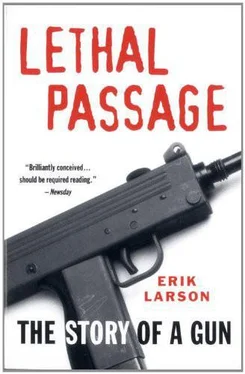
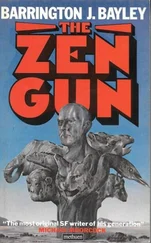
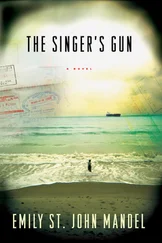

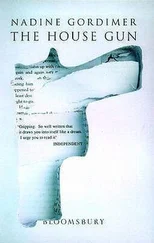

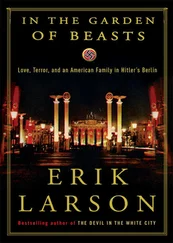

![Ричард Деминг - Whistle Past the Graveyard [= Give the Girl a Gun]](/books/412176/richard-deming-whistle-past-the-graveyard-give-t-thumb.webp)
